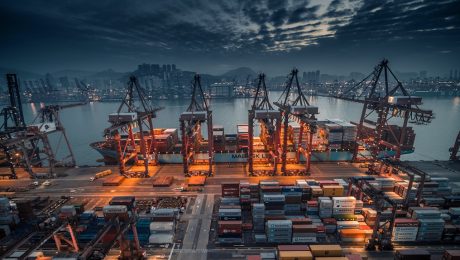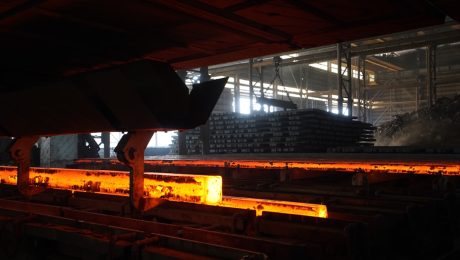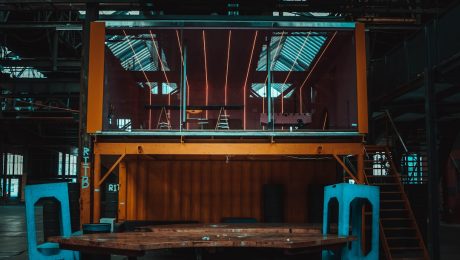In the construction and manufacturing industries, the integrity of piping systems is paramount. From transporting crucial fluids in power plants to ensuring safe water distribution in cities, pipes are essential components demanding unwavering quality. This blog post delves into the comprehensive quality control systems implemented throughout the pipe manufacturing process, ensuring the delivery of reliable and durable products.
1. Raw Material Inspection: The Foundation of Quality
The journey towards a high-quality pipe begins long before the manufacturing process. Rigorous inspection of raw materials is the cornerstone of any effective quality control system. This involves meticulously examining the chemical composition, mechanical properties, and physical characteristics of the incoming materials. For steel pipes, this might include checking for the precise carbon content, tensile strength, yield strength, and elongation. For plastic pipes, the focus shifts to polymer type, molecular weight distribution, and additives. Non-destructive testing (NDT) methods like ultrasonic testing or magnetic particle inspection might be employed to detect internal flaws or surface imperfections in the raw materials before they even enter the production line. Detailed documentation and traceability are crucial at this stage, allowing for the identification of any batch of raw materials that might later be linked to a quality issue.
2. In-Process Control: Monitoring Each Stage of Production
Maintaining consistent quality requires vigilant monitoring throughout the entire manufacturing process. In-process control involves regular inspections and testing at various stages of pipe production. This includes checking the dimensions of the pipe during forming, ensuring the correct wall thickness and diameter are maintained. For welded pipes, the welding process itself is subject to stringent quality checks, including visual inspection, radiographic testing (RT), and ultrasonic testing (UT) to detect any welding defects like porosity, cracks, or incomplete fusion. The heat treatment process, crucial for enhancing the mechanical properties of the pipe, is also carefully monitored and controlled to ensure the desired metallurgical structure is achieved. Data logging and statistical process control (SPC) techniques are often used to track key parameters and identify potential deviations from the desired specifications.
3. Dimensional Accuracy: Ensuring Precision and Conformity
Dimensional accuracy is a critical aspect of pipe quality. Pipes must meet precise specifications for diameter, wall thickness, length, and straightness to ensure proper fitting and functionality within the intended piping system. This requires the use of high-precision measuring instruments, such as calipers, micrometers, and laser scanners. Regular calibration of these instruments is crucial to maintain accuracy. Any deviations from the specified dimensions can lead to leakage, reduced strength, or incompatibility with connecting fittings. Automated measuring systems are increasingly used in modern pipe manufacturing facilities to provide real-time feedback and ensure consistent dimensional accuracy throughout the production process. These systems often integrate with the overall quality control system, allowing for immediate identification and correction of any dimensional discrepancies.
4. Testing Methodologies: Validating Performance and Durability
Beyond dimensional accuracy, various testing methodologies are employed to validate the performance and durability of the finished pipes. These tests are designed to evaluate the pipe’s resistance to internal pressure, external loads, and environmental factors. Hydrostatic testing is a common method used to assess the burst pressure and leakage resistance of the pipe under high internal pressure. This involves filling the pipe with water and subjecting it to increasing pressure until failure. Other tests might include impact testing, to assess the pipe’s resistance to sudden shocks, and fatigue testing, to determine its ability to withstand repeated stress cycles. The specific testing methodologies employed will depend on the pipe’s material, intended application, and relevant industry standards. Detailed test reports are essential for documenting the pipe’s performance characteristics and ensuring compliance with quality requirements.
5. Traceability and Documentation: Maintaining Accountability
A robust quality control system must include a comprehensive traceability system. This involves meticulously documenting every stage of the pipe’s lifecycle, from the sourcing of raw materials to the final delivery to the customer. Each pipe should be uniquely identifiable, allowing for the tracking of its entire manufacturing history. This is crucial for identifying the source of any quality issues that might arise and for ensuring accountability throughout the supply chain. Detailed records should be maintained for all inspections, tests, and manufacturing processes. This documentation serves as evidence of compliance with relevant standards and regulations and can be vital in resolving disputes or conducting root cause analysis in case of failures.
Implementing a comprehensive pipe product quality control system is an investment that pays off in the long run. It ensures the delivery of high-quality, reliable pipes, minimizing the risk of failures, reducing maintenance costs, and ultimately protecting the safety and efficiency of the systems in which they are used. By adhering to rigorous standards and employing advanced testing methodologies, manufacturers can build a reputation for excellence and deliver products that meet the highest industry benchmarks.
SEO Tags:
- Pipe Quality Control
- Pipe Manufacturing Quality
- Pipeline Inspection
- Pipe Testing Methods
- Quality Control Systems
body {
font-family: sans-serif;
line-height: 1.6;
}
h1, h2, h3 {
color: #333;
}
code {
background-color: #f0f0f0;
padding: 2px 4px;
border-radius: 4px;
}
Steel, a ubiquitous material in modern construction, boasts exceptional strength and versatility. However, ensuring the safety and longevity of steel structures demands a thorough understanding of strength calculations. This comprehensive guide delves into the intricacies of these calculations, covering key aspects from load determination to final design checks.
1. Understanding Load Types and Their Impact
Accurate strength calculations begin with a precise assessment of the loads a steel structure will endure. These loads can be broadly classified into:
- Dead Loads: These are permanent loads, including the weight of the structure itself (beams, columns, etc.), permanent fixtures, and finishes.
- Live Loads: These are variable loads that change over time. Examples include occupancy loads (people, furniture), snow loads, and wind loads. The magnitude and distribution of live loads are crucial considerations.
- Environmental Loads: These encompass loads from natural phenomena such as wind, snow, rain, earthquakes, and temperature variations. Design codes provide specific guidelines for determining these loads based on geographic location and structural characteristics.
- Impact Loads: These are sudden, dynamic loads that can significantly stress a structure. Examples include vehicle impacts on bridges or machinery vibrations.
Each load type contributes differently to the overall stress on the structure. Accurately estimating and combining these loads is crucial for ensuring structural integrity.
2. Material Properties: The Foundation of Steel Strength
The strength of a steel structure is intrinsically linked to the properties of the steel itself. Key material properties include:
- Yield Strength (fy): This represents the stress at which the steel begins to deform plastically. It’s a critical parameter in design calculations.
- Ultimate Tensile Strength (fu): This is the maximum stress the steel can withstand before failure.
- Young’s Modulus (E): This indicates the steel’s stiffness or resistance to elastic deformation.
- Poisson’s Ratio (ν): This describes the ratio of lateral strain to axial strain under uniaxial stress.
These properties are typically obtained from material test reports or design codes. Understanding these properties is essential for accurate stress and strain calculations.
3. Navigating Design Codes and Standards
Steel structure design is governed by specific codes and standards that dictate allowable stresses, safety factors, and design procedures. Examples include:
- AISC (American Institute of Steel Construction): Provides comprehensive design specifications for steel structures in North America.
- Eurocode 3: The European standard for the design of steel structures.
- AS/NZS 4600: The Australian/New Zealand standard for the design of steel structures.
These codes provide detailed guidelines for load combinations, member design, connection design, and stability checks. Adherence to relevant design codes is paramount for ensuring structural safety.
4. Analytical Methods: Determining Stresses and Deflections
Several analytical methods are employed to determine the stresses and deflections within a steel structure under various load conditions. Common methods include:
- Linear Elastic Analysis: This assumes a linear relationship between stress and strain. It’s widely used for simpler structures and load cases.
- Finite Element Analysis (FEA): A powerful numerical method that can analyze complex structures and load conditions with high accuracy. FEA software is widely used for detailed stress and deflection analysis.
- Plastic Analysis: This considers the material’s plastic behavior beyond the yield point. It’s used for determining the ultimate load-carrying capacity of a structure.
The choice of analytical method depends on the complexity of the structure, the accuracy required, and available resources.
5. Common Challenges and Considerations in Steel Structure Calculations
Several challenges can arise during steel structure calculations:
- Buckling: Slender members under compressive loads are susceptible to buckling, a sudden lateral instability. Buckling checks are crucial in design.
- Fatigue: Repeated cyclic loading can lead to fatigue failure even at stresses below the yield strength. Fatigue analysis is necessary for structures subjected to dynamic loads.
- Corrosion: Corrosion can significantly reduce the strength of steel members over time. Corrosion protection measures are essential.
- Connection Design: The strength of a steel structure is heavily dependent on the design and detailing of its connections. Proper connection design is crucial for ensuring overall structural integrity.
- Weld Integrity: Welds are critical components in steel structures. Ensuring the proper weld quality and strength is vital.
Careful consideration of these factors is essential for designing safe and reliable steel structures.
Accurate strength calculations are the cornerstone of safe and efficient steel structure design. By understanding load types, material properties, design codes, and analytical methods, engineers can ensure that steel structures meet the highest standards of safety and performance.
Tags: Steel structure design, strength calculations, structural engineering, steel design codes, finite element analysis
body { font-family: sans-serif; line-height: 1.6; }
h1, h2 { color: #333; }
h1 { font-size: 2.5em; }
h2 { font-size: 1.8em; }
The word “round” seems simple enough. We associate it immediately with circles and spheres, but its implications stretch far beyond basic geometry. This exploration delves into the multifaceted nature of “round,” examining its significance in mathematics, nature, symbolism, and even everyday language.
Round in Geometry: Defining the Circle and Sphere
In the realm of geometry, “round” is fundamentally defined by the circle and the sphere. A circle is a two-dimensional shape characterized by all its points being equidistant from a central point (the center). This equidistance creates perfect symmetry and a continuous curve. The circumference, the distance around the circle, is related to its diameter (the distance across the circle through the center) by the constant π (pi), approximately 3.14159. This fundamental relationship underpins countless calculations in mathematics, physics, and engineering.
Extending this into three dimensions, we encounter the sphere, a three-dimensional analogue of the circle. A sphere is a perfectly round three-dimensional object where all points on its surface are equidistant from a central point. Spheres are found everywhere in nature, from planets and stars to bubbles and raindrops. Their symmetrical form makes them incredibly efficient in various contexts, minimizing surface area for a given volume.
Round in Nature: From Planetary Orbits to Biological Forms
The prevalence of round shapes in nature is striking. Planetary orbits, while not perfectly circular, are often approximated as ellipses – slightly elongated circles. This is a consequence of gravitational forces. The near-perfect roundness of planets and stars is a result of gravitational collapse, where the immense force pulls matter into the most compact and stable form possible: a sphere. This principle applies at smaller scales too; raindrops and bubbles tend towards a spherical shape due to surface tension.
Biological systems also exhibit roundness. Many cells are roughly spherical, maximizing their volume-to-surface area ratio for efficient nutrient absorption and waste expulsion. The roundness of certain fruits and seeds, like oranges and peas, is often advantageous for dispersal and protection.
The Symbolism of Roundness: Completion and Perfection
Beyond its geometric and natural occurrences, roundness carries significant symbolic weight across various cultures and belief systems. The circle, often representing wholeness, infinity, and eternity, appears in numerous religious and spiritual contexts. The cycle of life, death, and rebirth is frequently symbolized by a circle or a spiral, emphasizing the continuous and cyclical nature of existence. Many ancient cultures considered the circle a sacred symbol, representing the cyclical nature of time and the cosmos.
In some traditions, the circle symbolizes completion and perfection. Its lack of beginning or end suggests a state of uninterrupted flow and continuous renewal. This symbolic meaning is often associated with spiritual enlightenment and the attainment of a higher state of being.
Round in Language and Metaphor: Complete, Full, and Comprehensive
The word “round” extends beyond its literal geometric meaning to encompass a broader range of connotations. We use “round” to describe something complete or comprehensive, such as a “round of applause” or a “round-table discussion.” In these contexts, “round” suggests inclusivity and the equal participation of all involved. Similarly, a “round number” is a whole number, easily manageable and clearly defined.
The phrase “coming full circle” signifies a return to an original state or position after a complete cycle of events. This metaphorical usage highlights the cyclical nature of experiences and the possibility of revisiting past situations with new perspectives.
Round in Technology and Engineering: Applications and Innovations
The principles of roundness are fundamental to many technological advancements. Wheels, gears, and bearings rely on circular motion for efficiency and smooth operation. The roundness of these components minimizes friction and allows for seamless transmission of power. Spherical lenses in cameras and telescopes utilize the unique properties of spheres to focus and manipulate light, enabling high-resolution imaging.
Furthermore, the concept of rotation, intrinsically linked to roundness, is crucial in numerous engineering applications. Rotating machinery, from turbines to centrifuges, utilizes circular motion to achieve specific functionalities. The design and optimization of these systems rely heavily on understanding the dynamics of rotating bodies and the forces involved.
In conclusion, the seemingly simple concept of “round” reveals itself to be a rich and multifaceted topic with far-reaching implications across various disciplines. From the precise definitions of geometry to the symbolic representations in art and culture, and the practical applications in technology, the concept of “round” continues to shape our understanding of the world around us.
Tags: round, circle, sphere, geometry, symbolism
The steel industry is a complex beast. Navigating the myriad of grades, specifications, and suppliers can be overwhelming, especially for businesses without dedicated metallurgical expertise. Making the wrong steel choices can lead to costly project delays, compromised quality, and significant financial losses. This is where technical consulting for steel buyers steps in, providing the knowledge and expertise necessary to make informed decisions and optimize your steel procurement process.
Understanding Your Steel Needs: The Foundation of Successful Procurement
Before diving into the specifics of steel grades and suppliers, a thorough understanding of your project’s requirements is paramount. Technical consultants work closely with clients to define their needs, considering factors such as:
- Application: What will the steel be used for? This dictates the necessary mechanical properties (strength, ductility, toughness), corrosion resistance, and weldability.
- Environment: Will the steel be exposed to harsh weather conditions, chemicals, or high temperatures? This impacts the choice of material and necessary coatings.
- Budget: Establishing a clear budget helps narrow down the range of feasible steel options. Consultants can help identify cost-effective alternatives without sacrificing quality.
- Lead Time: Project timelines dictate the availability and sourcing strategies. Consultants can help secure steel within the required timeframe.
Optimizing Steel Grade Selection: Balancing Performance and Cost
Choosing the right steel grade is critical. There’s a vast array of options, each with unique properties and price points. Technical consultants possess the metallurgical knowledge to analyze your specific needs and recommend the most suitable grade. This often involves:
- Material Property Analysis: Evaluating the required tensile strength, yield strength, elongation, hardness, and other relevant properties based on the application.
- Grade Comparison: Comparing different steel grades to determine the optimal balance between performance and cost. This may involve considering alternative materials with similar properties but lower prices.
- Specification Review: Ensuring that the selected steel grade meets all relevant industry standards and specifications.
- Testing and Verification: Overseeing material testing to verify that the delivered steel conforms to the specified requirements.
Navigating the Steel Supply Chain: Ensuring Reliable Sourcing
The steel supply chain is complex, with numerous intermediaries involved. Technical consultants can help streamline this process by:
- Supplier Identification and Qualification: Identifying reliable and reputable steel suppliers based on factors such as capacity, quality control systems, and delivery reliability.
- Negotiating Contracts: Assisting in negotiating favorable pricing and delivery terms with suppliers.
- Risk Management: Identifying and mitigating potential risks in the supply chain, such as material shortages or quality issues.
- Logistics Optimization: Optimizing the transportation and handling of steel to minimize costs and delays.
Implementing Robust Quality Control Measures: Protecting Your Investment
Maintaining quality control throughout the steel procurement process is crucial. Consultants can help implement strategies such as:
- Inspection and Testing: Overseeing inspections and testing at various stages of the process to ensure that the steel meets the specified requirements.
- Documentation and Traceability: Maintaining comprehensive documentation to track the origin, processing, and handling of the steel.
- Non-Destructive Testing (NDT): Utilizing NDT methods such as ultrasonic testing or magnetic particle inspection to detect defects without damaging the material.
- Corrective Actions: Developing and implementing corrective actions to address any quality issues that are identified.
Cost Optimization Strategies: Maximizing Value for Your Money
Steel costs can significantly impact project budgets. Technical consultants can help optimize steel costs by:
- Value Engineering: Evaluating the design and specifications to identify opportunities to reduce material costs without compromising performance.
- Negotiation and Procurement Strategies: Developing effective negotiation strategies to secure favorable pricing from suppliers.
- Inventory Management: Optimizing inventory levels to minimize storage costs and avoid material obsolescence.
- Waste Reduction: Implementing strategies to minimize material waste during fabrication and construction.
By engaging a technical consultant specializing in steel, businesses can significantly reduce risks, improve efficiency, and optimize their steel procurement process. The resulting cost savings and enhanced quality will ensure a successful project outcome and a stronger bottom line.
Ready to optimize your steel buying strategy? Contact us today for a consultation!
body {
font-family: sans-serif;
line-height: 1.6;
}
h1, h2 {
color: #333;
}
Cash. The physical manifestation of value. For centuries, it’s been the cornerstone of commerce, a tangible representation of wealth and exchange. But in an increasingly digital world, its future is being questioned. This comprehensive guide delves into the multifaceted world of cash, exploring its history, advantages, disadvantages, security concerns, and its evolving role in modern society.
The Historical Significance of Cash: From Barter to Banknotes
Before the advent of cash, societies relied on bartering – exchanging goods and services directly. This system was inefficient, hampered by the “double coincidence of wants” – the need for both parties to desire what the other possessed. The introduction of early forms of currency, such as shells, beads, and precious metals, addressed this limitation. These items held inherent value, facilitating smoother transactions. The evolution continued with the development of coins, standardized in weight and purity, providing greater consistency and trust. Paper money, initially representing a claim on precious metals held in reserve, emerged later, revolutionizing commerce by offering portability and convenience. The history of cash is a fascinating journey reflecting the evolution of trust, standardization, and economic sophistication.
Advantages of Cash: Privacy, Accessibility, and Tangibility
Despite the rise of digital payments, cash retains several significant advantages. Firstly, it offers a high degree of privacy. Unlike credit and debit card transactions, cash transactions leave no digital trail, protecting individuals’ financial information and spending habits from scrutiny. Secondly, cash offers unparalleled accessibility. It’s usable anywhere, regardless of access to technology or bank accounts, making it vital for underserved populations and in areas with limited internet connectivity. Thirdly, the tangibility of cash provides a sense of security and control. Holding physical money allows individuals to directly manage their finances and budget effectively. This tangible aspect also reduces the risk of unauthorized digital transactions and data breaches.
Disadvantages of Cash: Security Risks, Handling Costs, and Limited Traceability
While cash offers undeniable benefits, it also presents drawbacks. The most significant is security. Cash is vulnerable to theft, loss, and damage. Carrying large sums of money increases the risk of becoming a target for criminals. Furthermore, the handling costs associated with cash are substantial. Businesses incur expenses related to storage, transportation, counting, and security measures. Governments also face costs related to printing and distributing currency. Finally, the limited traceability of cash makes it attractive for illicit activities such as money laundering and tax evasion. This lack of transparency makes it challenging for authorities to monitor and regulate financial flows.
Cash Security and Counterfeiting Measures: Protecting the Integrity of Currency
Governments employ sophisticated measures to combat counterfeiting and enhance cash security. These include intricate designs incorporating watermarks, security threads, and special inks that are difficult to replicate. Advanced printing techniques and specialized materials make it increasingly challenging for counterfeiters to produce convincing replicas. Furthermore, technological advancements, such as specialized detection devices used by banks and businesses, help identify counterfeit notes quickly and efficiently. Constant innovation in security features is crucial in maintaining public trust in the integrity of currency and in safeguarding the financial system.
The Future of Cash in a Digital Age: A Gradual Decline or Persistent Relevance?
The future of cash is a subject of ongoing debate. The rise of digital payment methods, such as mobile payments, online banking, and cryptocurrencies, poses a significant challenge to the dominance of cash. Many countries are witnessing a decline in cash usage, with a growing preference for contactless transactions. However, cash is unlikely to disappear completely in the foreseeable future. Its advantages, particularly its accessibility and privacy, ensure its continued relevance, especially for segments of the population less comfortable or capable of using digital technologies. The future likely lies in a hybrid system where both cash and digital payment methods coexist, catering to the diverse needs and preferences of the population.
Ultimately, the future of cash will depend on a complex interplay of technological advancements, regulatory changes, and evolving societal preferences. While the digital revolution is reshaping the financial landscape, the enduring utility and accessibility of cash suggest that it will likely remain a significant, albeit possibly diminished, player in the global economy for years to come.
International trade offers immense opportunities for growth and expansion, but it also presents a complex web of risks. From political instability to logistical nightmares and fluctuating exchange rates, navigating the global marketplace requires a robust risk management strategy. This guide delves into the key areas of concern and provides actionable steps to mitigate potential losses and ensure the success of your international ventures.
1. Political and Economic Risks: Understanding the Geopolitical Landscape
Political and economic instability are major threats to international trade. Political risks encompass events like regime changes, civil unrest, wars, and trade sanctions. These can disrupt supply chains, delay shipments, and even lead to asset seizure. Economic risks involve fluctuations in exchange rates, inflation, and economic downturns in target markets. These can impact profitability, pricing strategies, and the overall viability of your international operations. Effective management requires:
- Thorough Due Diligence: Conduct comprehensive research on the political and economic climate of your target markets. Utilize resources like the World Bank, International Monetary Fund (IMF), and country risk assessment reports.
- Diversification: Don’t put all your eggs in one basket. Diversify your sourcing and market destinations to reduce your exposure to regional risks.
- Political Risk Insurance: Consider purchasing political risk insurance to protect against losses arising from political events beyond your control. This can cover risks such as expropriation, nationalization, and war.
- Hedging Strategies: Implement hedging techniques to mitigate exchange rate risks. This could involve forward contracts, futures contracts, or options to lock in favorable exchange rates.
2. Logistical Challenges: Ensuring Smooth Supply Chain Operations
International trade involves intricate supply chains that are susceptible to disruptions. Delays, damage, and loss of goods during transit are common occurrences. Furthermore, navigating customs procedures, documentation requirements, and different regulatory frameworks in various countries adds complexity. To mitigate these risks:
- Reliable Shipping Partners: Choose reputable and experienced shipping companies with a proven track record of handling international shipments. Ensure they have adequate insurance coverage.
- Robust Documentation: Maintain meticulous records of all documentation, including invoices, bills of lading, certificates of origin, and other necessary permits. Inaccurate or incomplete documentation can lead to delays or rejection of shipments.
- Inventory Management: Implement effective inventory management techniques to ensure adequate stock levels while avoiding excessive inventory holding costs. Consider using inventory management software for better tracking and control.
- Contingency Planning: Develop contingency plans to address potential disruptions in your supply chain. This might involve having backup suppliers or alternative shipping routes.
3. Financial Risks: Managing Payments and Currency Fluctuations
Financial risks are inherent in international trade, particularly concerning payments and currency fluctuations. Payment delays, non-payment by buyers, and exchange rate volatility can significantly impact profitability. To mitigate these risks:
- Trade Finance Instruments: Utilize trade finance instruments such as letters of credit (LCs), documentary collections, and purchase order financing to secure payments and manage credit risk.
- Credit Insurance: Consider purchasing credit insurance to protect against non-payment by buyers. This can cover losses due to insolvency or political risks.
- Currency Hedging: Employ currency hedging strategies to manage exchange rate risks. This involves using forward contracts, futures contracts, or options to lock in favorable exchange rates.
- Due Diligence on Buyers: Conduct thorough due diligence on potential buyers to assess their creditworthiness and financial stability.
4. Legal and Regulatory Compliance: Navigating the Complex Web of Laws
International trade involves a complex web of laws and regulations in multiple jurisdictions. Non-compliance can lead to hefty fines, legal disputes, and reputational damage. Effective risk management requires:
- Legal Counsel: Seek advice from experienced international trade lawyers to ensure compliance with all relevant laws and regulations.
- Understanding Trade Agreements: Familiarize yourself with relevant trade agreements and tariffs that affect your specific products and markets.
- Customs Regulations: Understand the customs regulations and procedures in your target markets to ensure smooth clearance of shipments.
- Contractual Agreements: Draft clear and comprehensive contracts that specify payment terms, delivery schedules, and dispute resolution mechanisms.
5. Cybersecurity Risks: Protecting Sensitive Data in a Digital World
In today’s digital age, cybersecurity risks pose a significant threat to international trade. Data breaches, cyberattacks, and fraud can disrupt operations, compromise sensitive information, and lead to financial losses. To mitigate these risks:
- Robust Cybersecurity Measures: Implement strong cybersecurity measures, including firewalls, intrusion detection systems, and data encryption.
- Employee Training: Train employees on cybersecurity best practices, including phishing awareness and password security.
- Data Backup and Recovery: Regularly back up your data and develop a comprehensive data recovery plan to minimize the impact of data loss.
- Secure Communication Channels: Use secure communication channels for exchanging sensitive information with partners and customers.
Effective risk management is crucial for success in international trade. By proactively identifying, assessing, and mitigating potential risks, businesses can significantly enhance their chances of achieving their global ambitions. Remember that continuous monitoring and adaptation are key to navigating the ever-evolving landscape of international commerce.
SEO-Friendly Tags:
international trade risk management, global trade risks, import export risks, supply chain risks, trade finance
The machinery manufacturing industry relies heavily on a consistent and reliable supply of high-quality steel. From the smallest component to the largest frame, steel forms the backbone of countless machines. Understanding the intricacies of steel supply is crucial for manufacturers aiming for efficiency, cost-effectiveness, and product excellence. This comprehensive guide delves into the key aspects of steel supply, providing valuable insights for industry professionals.
Choosing the Right Steel Grade: A Foundation for Success
The selection of the appropriate steel grade is paramount. The properties required vary drastically depending on the application. For instance, high-strength low-alloy (HSLA) steels are ideal for applications demanding high tensile strength and weldability, often found in construction machinery. Tool steels, characterized by exceptional hardness and wear resistance, are essential for cutting tools and dies. Stainless steels offer superior corrosion resistance, making them suitable for food processing equipment and components exposed to harsh environments. Understanding the nuances of different steel grades – including carbon steel, alloy steel, stainless steel, and tool steel – and their respective mechanical properties (tensile strength, yield strength, hardness, ductility) is crucial for selecting the optimal material for a specific machine component.
Strategic Sourcing: Navigating the Steel Supply Chain
Securing a reliable supply of steel requires a well-defined sourcing strategy. This involves identifying reputable steel suppliers with proven track records and the capacity to meet your specific needs. Factors to consider include supplier location (proximity reduces transportation costs and lead times), production capacity, quality control measures, and their ability to handle fluctuating demands. Diversifying your supplier base mitigates risks associated with single-source dependency, ensuring a continuous supply even in times of market volatility. Establishing strong relationships with key suppliers fosters collaboration and allows for proactive communication regarding potential supply chain disruptions.
Quality Control: Ensuring Steel Integrity from Source to Finish
Maintaining stringent quality control throughout the steel supply chain is non-negotiable. This begins with verifying the supplier’s quality management system (QMS), often certified to ISO 9001 or similar standards. Regular inspection of incoming steel materials is essential, involving visual checks, chemical analysis, and mechanical testing to ensure compliance with specified requirements. Traceability is crucial, allowing manufacturers to track the origin and processing history of each steel batch. Implementing robust quality control procedures minimizes the risk of defects and ensures the production of reliable and durable machinery.
Cost Optimization: Balancing Quality and Affordability
Managing steel costs effectively is critical for profitability. This involves optimizing the steel grade selection to avoid over-specifying materials, negotiating favorable pricing with suppliers through long-term contracts or volume discounts, and exploring alternative steel sources when appropriate. Implementing lean manufacturing principles minimizes waste and improves material utilization. Careful inventory management reduces storage costs and prevents obsolescence. By strategically managing all aspects of steel procurement and utilization, manufacturers can achieve significant cost savings without compromising quality.
Future Trends in Steel Supply for Machinery Manufacturing
The machinery manufacturing industry is constantly evolving, and steel supply is adapting to meet these changes. The increasing demand for sustainable manufacturing practices is driving the adoption of recycled steel and greener steel production methods. Advanced steel alloys with enhanced properties, such as high-strength, lightweight steels, are gaining traction to improve machine efficiency and reduce energy consumption. Digitalization is transforming the steel supply chain, with technologies such as blockchain improving traceability and transparency. Furthermore, additive manufacturing (3D printing) using metal powders is emerging as a disruptive technology, offering the potential for customized steel components and on-demand manufacturing.
In conclusion, effective steel supply management is a cornerstone of successful machinery manufacturing. By carefully considering the factors discussed above – from steel grade selection and sourcing strategies to quality control and cost optimization – manufacturers can ensure a reliable supply of high-quality steel, leading to the production of durable, efficient, and cost-effective machinery.
Tags: Steel Supply, Machinery Manufacturing, Steel Grades, Sourcing Strategy, Quality Control, Cost Optimization, Steel Industry
The steel industry is a cornerstone of modern civilization, but its traditional production methods are significant contributors to global carbon emissions. The urgent need to mitigate climate change demands a radical shift towards sustainable steel production. This post explores innovative strategies to drastically reduce the carbon footprint of steel factories, paving the way for a greener and more sustainable future.
1. Transitioning to Low-Carbon Energy Sources
The most significant source of carbon emissions in steel production is the energy used in the blast furnace process. Traditional blast furnaces rely heavily on coke, a fossil fuel derived from coal, to provide the heat necessary for iron ore reduction. Transitioning to low-carbon energy sources is paramount. This includes:
- Hydrogen-based reduction: Replacing coke with hydrogen as a reducing agent is a game-changer. Hydrogen can be produced from renewable sources like solar and wind power, resulting in virtually zero carbon emissions during the reduction process. While still under development, significant progress is being made in developing cost-effective hydrogen-based steelmaking technologies.
- Electric Arc Furnaces (EAFs): EAFs utilize electricity to melt scrap steel, significantly reducing reliance on fossil fuels. The carbon footprint of EAFs depends heavily on the electricity source; using renewable energy sources makes EAFs a highly sustainable option. Increasing scrap metal recycling is crucial to maximizing the effectiveness of EAFs.
- Carbon Capture, Utilization, and Storage (CCUS): CCUS technologies capture CO2 emissions from blast furnaces and either utilize them in other industrial processes or store them underground. While still relatively expensive, CCUS can play a crucial role in reducing emissions from existing blast furnaces while cleaner technologies are being scaled up.
2. Optimizing Production Processes for Efficiency
Beyond energy sources, optimizing production processes can significantly reduce emissions. This involves:
- Improved process control: Implementing advanced process control systems can optimize energy consumption and reduce waste, leading to lower emissions. Real-time monitoring and data analysis can identify inefficiencies and allow for targeted improvements.
- Waste heat recovery: Steel production generates significant amounts of waste heat. Implementing systems to recover and utilize this waste heat for other processes, such as heating buildings or generating electricity, can drastically reduce energy consumption and emissions.
- Minimizing material losses: Reducing material losses during the production process minimizes the need for additional raw materials, reducing the associated emissions from mining and transportation.
3. Enhancing Recycling and Circular Economy Strategies
Steel is a highly recyclable material, and increasing the recycling rate is crucial for reducing its carbon footprint. This requires:
- Improving scrap metal collection and processing: Investing in efficient scrap metal collection and processing infrastructure is essential to ensure a steady supply of recycled steel for EAFs. This includes developing better sorting and separation technologies to improve the quality of recycled steel.
- Designing for recyclability: Designing steel products with recyclability in mind ensures that they can be easily and efficiently recycled at the end of their life cycle, closing the loop and reducing the demand for virgin materials.
- Promoting the use of recycled steel: Governments and industries can promote the use of recycled steel through policies and incentives, encouraging wider adoption and increasing demand.
4. Investing in Research and Development
Continued investment in research and development is crucial for developing and implementing even more sustainable steelmaking technologies. This includes:
- Developing more efficient hydrogen production methods: Research into cost-effective and sustainable hydrogen production methods, such as electrolysis powered by renewable energy, is essential for widespread adoption of hydrogen-based steelmaking.
- Improving CCUS technologies: Further research and development are needed to improve the efficiency and cost-effectiveness of CCUS technologies, making them a viable option for reducing emissions from existing blast furnaces.
- Exploring alternative steelmaking processes: Research into alternative steelmaking processes that are inherently more sustainable, such as direct reduction processes using renewable energy, is crucial for long-term decarbonization.
5. Collaboration and Policy Support
Reducing the carbon footprint of the steel industry requires a collaborative effort between governments, industry players, and research institutions. This includes:
- Implementing carbon pricing mechanisms: Carbon pricing mechanisms, such as carbon taxes or emissions trading schemes, can incentivize steel producers to reduce their emissions.
- Providing financial incentives for green steel technologies: Governments can provide financial incentives, such as grants and subsidies, to encourage the adoption of green steel technologies.
- Setting ambitious emission reduction targets: Setting clear and ambitious emission reduction targets for the steel industry can drive innovation and accelerate the transition to sustainable steel production.
- Promoting international cooperation: International cooperation is essential to share best practices and coordinate efforts to reduce the global carbon footprint of the steel industry.
By implementing these strategies, the steel industry can significantly reduce its carbon footprint and contribute to a more sustainable future. The transition will require significant investment and effort, but the benefits – a healthier planet and a more resilient economy – are well worth the endeavor.
Tags: steel industry, carbon footprint, green steel, sustainable steel, decarbonization
The global steel industry is a fiercely competitive landscape, with established players and emerging economies vying for market share. Turkey, however, has carved a significant niche for itself, establishing a reputation for producing high-quality steel at competitive prices. This success isn’t accidental; it’s the result of a strategic confluence of factors that contribute to a powerful competitive edge.
Unleashing the Power of Strategic Location
Turkey’s geographical position is a key element in its steel industry’s success. Situated at the crossroads of Europe and Asia, it enjoys unparalleled access to both established and rapidly developing markets. Proximity to major consumers in Europe and the Middle East significantly reduces transportation costs and delivery times, giving Turkish steel producers a considerable advantage over competitors further afield. This strategic location allows for efficient export routes and facilitates quicker response times to market demands, a crucial factor in a fast-paced industry.
Cost-Effectiveness: A Foundation of Competitiveness
The cost of production is a critical determinant of competitiveness in any industry, and steel is no exception. Turkey benefits from relatively lower labor costs compared to many Western nations, contributing significantly to the overall cost-effectiveness of its steel production. Furthermore, the country possesses abundant domestic resources, including iron ore, although not in sufficient quantities to be entirely self-sufficient. This reduces reliance on expensive imports, further bolstering its price competitiveness. Efficient production processes and technological advancements also play a role in minimizing production costs, enabling Turkish steel manufacturers to offer highly competitive prices in the global market.
High-Quality Steel: Meeting International Standards
While cost is a crucial factor, the quality of the steel produced is paramount. Turkish steel manufacturers have made significant strides in improving the quality of their output, meeting and often exceeding international standards. This commitment to quality is reflected in rigorous quality control measures throughout the production process, from raw material sourcing to final product inspection. Investments in modern technology and equipment have played a crucial role in this improvement, ensuring consistency and reliability in the steel produced. This emphasis on quality has helped build trust and confidence among international buyers, solidifying Turkey’s position as a reliable supplier of high-quality steel.
Technological Innovation and R&D: Driving Future Growth
The Turkish steel industry isn’t resting on its laurels. Recognizing the need for continuous improvement and adaptation, significant investments are being made in research and development (R&D). This focus on innovation is leading to the development of new steel grades with enhanced properties, tailored to specific applications. Furthermore, the adoption of advanced technologies in production processes is improving efficiency, reducing waste, and enhancing overall productivity. This commitment to innovation ensures that Turkish steel remains competitive not just in the present but also in the future, adapting to evolving market demands and technological advancements.
Government Support and Infrastructure: Fostering Growth
The Turkish government has actively supported the growth of its steel industry through various policy initiatives. These include incentives for investment, infrastructure development, and streamlined regulatory processes. The improvement of transportation infrastructure, including ports and railways, has facilitated the efficient movement of raw materials and finished products, further enhancing the competitiveness of Turkish steel producers. Government support in fostering a favorable business environment has played a crucial role in attracting foreign investment and promoting the overall growth of the sector.
In conclusion, the competitive edge of Turkish steel is a result of a multifaceted approach encompassing strategic location, cost-effectiveness, high-quality production, technological innovation, and supportive government policies. This combination of factors positions Turkey as a significant player in the global steel market, poised for continued growth and expansion in the years to come.
SEO-Friendly Tags:
- Turkish Steel Industry
- Turkish Steel Exports
- Global Steel Market
- Competitive Steel Production
- Steel Manufacturing Turkey
body { font-family: sans-serif; line-height: 1.6; }
h1, h2, h3 { color: #333; }
img { max-width: 100%; height: auto; }
In today’s increasingly noisy world, the need for quiet and controlled acoustic environments is paramount. Whether you’re a musician seeking the perfect recording studio, a business requiring confidential communication, or an individual desiring a sanctuary from external disturbances, sound-insulated steel rooms offer a robust and effective solution. This comprehensive guide delves into the world of these specialized structures, exploring their applications, construction, benefits, and crucial considerations.
The Applications of Sound-Insulated Steel Rooms: Beyond the Studio
While often associated with recording studios and music production, the applications of sound-insulated steel rooms extend far beyond the realm of entertainment. These versatile spaces find their niche in a variety of sectors:
- Music and Audio Production: These rooms provide the critical acoustic isolation needed for recording high-quality audio, minimizing external noise interference and ensuring pristine sound capture.
- Industrial Settings: In factories and manufacturing plants, sound-insulated steel rooms can house noisy machinery, protecting workers from excessive noise exposure and improving workplace safety.
- Medical Facilities: Creating quiet spaces for sensitive medical procedures, consultations, or diagnostic equipment is crucial. Steel rooms provide the necessary acoustic isolation and hygiene.
- Commercial Enterprises: Confidential meetings, sensitive phone calls, and private discussions benefit greatly from the soundproofing capabilities of these rooms, ensuring data security and privacy.
- Home Studios and Home Cinemas: For individuals seeking a dedicated space for hobbies or entertainment, a sound-insulated steel room can provide a dedicated, quiet environment free from distractions.
Construction and Materials: Building a Silent Fortress
The effectiveness of a sound-insulated steel room hinges on its construction. Several key elements contribute to its acoustic performance:
- Steel Frame: The robust steel frame provides structural integrity and acts as a barrier to sound transmission. The thickness and type of steel are crucial factors influencing sound reduction.
- Insulation: High-density insulation materials, such as mineral wool or fiberglass, are strategically placed within the walls, ceiling, and floor to absorb sound waves and minimize reverberation.
- Sound-Dampening Materials: Additional sound-dampening materials, like mass-loaded vinyl (MLV) or resilient channels, are often incorporated to further enhance sound isolation.
- Doors and Windows: Specialized soundproof doors and windows are essential components, featuring robust construction, airtight seals, and often multiple layers of glass or specialized materials.
- Airtight Seals: Careful attention to detail is paramount. Any gaps or cracks in the structure can compromise the overall soundproofing effectiveness. Thorough sealing is crucial.
Benefits of Sound-Insulated Steel Rooms: A Multifaceted Advantage
Investing in a sound-insulated steel room offers numerous advantages beyond simply reducing noise levels:
- Superior Sound Isolation: Achieve significantly reduced noise levels, creating a peaceful and productive environment.
- Enhanced Privacy and Confidentiality: Protect sensitive information and conversations from eavesdropping.
- Improved Focus and Concentration: Minimize distractions and create an ideal space for focused work or creative pursuits.
- Increased Security: The robust steel construction can provide added security, protecting valuable equipment or sensitive materials.
- Versatility and Adaptability: These rooms can be customized to suit various needs and applications, from small recording booths to large-scale industrial enclosures.
Considerations Before Building: Planning for Success
Before embarking on the construction of a sound-insulated steel room, careful planning is essential:
- Acoustic Requirements: Determine the desired level of sound reduction (measured in decibels) based on the intended use of the room.
- Space Requirements: Accurately assess the necessary dimensions of the room to accommodate equipment, personnel, and desired functionality.
- Budgetary Considerations: Sound-insulated steel rooms can range in cost depending on size, materials, and complexity of the construction.
- Building Codes and Regulations: Ensure compliance with all relevant building codes and regulations pertaining to construction, safety, and acoustic performance.
- Professional Consultation: Seek expert advice from acoustic engineers and construction professionals to ensure the design and construction meet your specific needs and achieve optimal sound isolation.
Maintaining Your Sound-Insulated Steel Room: Long-Term Performance
To ensure the longevity and continued effectiveness of your sound-insulated steel room, regular maintenance is crucial. This includes:
- Regular Inspections: Periodically check for any cracks, gaps, or damage to the seals and insulation.
- Seal Repair: Address any identified issues promptly to prevent sound leakage.
- Cleaning and Maintenance: Keep the interior clean and free of debris to maintain optimal acoustic performance.
- Professional Servicing: Consider scheduling periodic professional inspections and maintenance to ensure the continued effectiveness of the sound insulation.
Sound-insulated steel rooms represent a significant investment, but the benefits in terms of noise reduction, privacy, security, and overall productivity are substantial. By carefully considering the factors outlined above, you can create a truly effective and versatile space tailored to your specific requirements.
Tags: soundproof steel room, sound insulated steel room, acoustic steel room, noise reduction room, steel room construction










